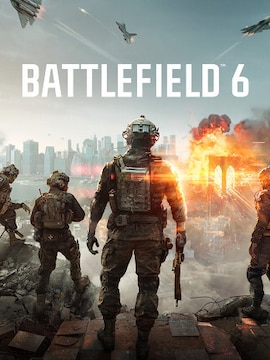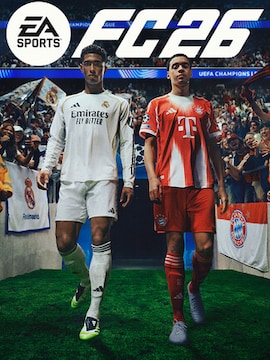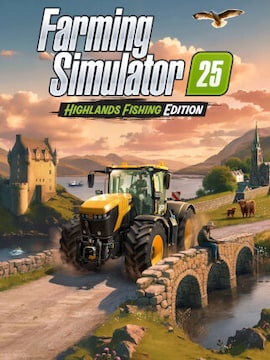There is an old story about blindfolded scholars inspecting an elephant, each only having access to a single part of the animal. One inspects the trunk, and concludes the elephant is like a snake. Another inspects the leg and concludes the elephant is like a tree, and so on.
Of course, an outside onlooker knows that each of these scholars, while right within their own scope of perception, missed the forest for the elephant legs, because the creature is much more than the sum of its parts.
This cute story about perspective is crucial, because perspective lies at the heart of the value of inclusivity for creative endeavors. It’s especially true in video games, which gracefully mix writing, music, art, play rules, and motoric capacity to create a medium unlike any other.
So, let’s talk a little bit about the reasons why diversity and inclusivity are important, both in production and in the product.
| Game | Release | Genre | Developer | |
|---|---|---|---|---|
 | If Found | 2020-05 | Indie | DREAMFEEL |
 | Fable III | 2010-10-26 | Adventure | Lionhead Studios |
 | Gone Home | 2013-08-15 | Adventure | Fullbright |
 | Celeste | 2018-01-25 | Adventure | Matt Makes Games Inc. |
 | Night In The Woods | 2017-02-21 | Action & Shooter | Infinite Fall |
 | Life Is Strange 2 Complete Season | 2018-09-27 | Adventure | DONTNOD Entertainment |
 | 2064 Read Only Memories | 2015-10-06 | Adventure | MidBoss, LLC. |
 | Life Is Strange True Colors | 2021-09-09 | Adventure | Deck Nine |
 | Dream Daddy A Dad Dating Simulator | 2017-07-20 | Indie | Game Grumps |
 | Dragon Age Inquisition | 2014-11-20 | RPG | BioWare Edmonton |
 | Undertale | 2015-09-15 | Indie | tobyfox |
 | Life Is Strange Remastered Collection | 2022-02-01 | Adventure | Deck Nine |
 | Stardew Valley | 2016-02-26 | Adventure | ConcernedApe |
 | Assassins Creed Odyssey Standard Edition | 2018-10-05 | Action | Ubisoft Quebec |
 | Watch Dogs 2 | 2016-11-29 | Adventure | Ubisoft |
The creative process
Writers are frequently advised to “write what they know”, which seems restrictive, unless taken as a suggestion to always read up on what they are writing about instead of making stuff up. But eventually, everybody hits a wall.
For some, it might be science, for others history, others still might have trouble figuring out important, but obscure bits of armed combat. In situations like these, experts are often hired to offer advice. Because everybody has gaps in knowledge and might need help if the goal is to create something authentic and in good faith.
The same principle is true of inclusivity consultants, also known as sensitivity readers. They are people whose expertise revolves around helping writers (and artists) talk about other people with competence and avoid cultural blunders equivalent to claiming that the Earth is flat.
This is relevant for all creative endeavors. Writers are the most exposed, but sensitivity consultants can also participate in the concept art process, for example. They are there to weed out culturally sensitive elements, or touch up something already meant to be inclusive to the level of authenticity that’s going to be appreciated by the very people it intends to include.
The examples are as diverse, as humanity itself, but such consultation might involve tweaking concepts for PoC hairstyles, pointing out art which mimics malicious caricatures, or telling writers about the way people with disabilities view their situation and how to write about their lives respectfully.
The examples could go on, exploring the full scope of human existence, from ethnicity and sexual orientations, to dark of history and navigating modern discourse.
Why does it matter?
Being competently inclusive of people who are frequently marginalized by popular history and culture is a simple kindness, but there’s more to it.
First of all, authentic inclusion of people other than the “default” — a vaguely athletic white man —provides all the other people with the kind of role models and inspiration that “the default” could enjoy for decades of the hobby.
Insomniac’s Spider-Man was great, and it’s always nice to see Peter Parker, but it was also great that the follow-up focused on Miles Morales. A teen whose both African-American and Puerto-Rican heritage is expressed not just on paper, but in practice in many aspects of the game’s world and story. Like the wonderful Into the Spider-verse movie before, this sidequel to Insomniac’s Spider-Man gave people or similar descent a video game (well, a comic book hero, originally) protagonist they can identify with in the same way and depth that millions of people could easily see themselves in Pete over the decades.
The examples are many and growing in numbers. Respectful (which doesn’t need to mean: positive, a well-written, authentic villain is cool!) inclusion of different ethnicities, sexual orientations, or nationalities brings new audiences to the hobby. Especially ones that have been excluded in the past, either by omission, or, worse, by being represented through caricatures of their people or cultures. It’s one thing to not be invited at all, another to be invited only to be mocked and vilified.
From a cynical perspective, this means new people to sell games to. It also means a breath of fresh air, as new stories being told, or old stories being given new contexts.
From a creative standpoint, however, it marks an important shift. Games which focus on people who are not just the white hetero male bring the entire medium closer to the sought-after status of a form of expression equivalent to literature, art, film, and music which have been the outlet for diverse perspectives for as long as they’ve existed.
The game in action
Games are not all art and words, and tunes, however. They are also a form of play, which comes with its own requirements which might be obstacles for people with sensory or motoric impairments. This is where accessibility comes in, as an important element of inclusivity on a more direct, practical level. Accessibility options take many forms.
Simple subtitles make games more welcoming to people who are hard on hearing. Sometimes they are even customizable, with high-contrast colours, dyslexia-friendly fonts, or size scaling.
Some accessibility options are more involved, like color-vision deficiency (color blindness) palettes affecting the entire game to make it more legible, or a way to make the game more acceptable to people affected by certain phobias. Of course, acrophobia would be hard to deal with in Red Dead Redemption 2, but Grounded replacing spiders with various degrees of abstracted entities is valuable aid for those experiencing arachnophobia.
We have articles exploring the incredibly broad subject of accessibility in greater detail, including a list of games with remarkable range of options to make the game welcoming to people who experience health-based difficulties.
Where does it leave us?
What are all these words leading up to? Well, two places, really.
One is about the importance of opening the game development to people coming from diverse backgrounds and different perspectives, because it can, and already has, make the games a richer, more authentic, and more diverse experience. Game studios are still predominantly staffed with white hetero men (according to the IGDA survey from 2021), which is not as conducive to fresh ideas as more diverse environment would be. Take the accessibility options as an easy example: they are valuable not just to the people they are specifically created for, but they wouldn’t exist without listening to the perspectives of people who needed them to be able to enjoy video games on the same level as everybody else.
The other place is the position of video games in broader culture. It’s already an incredibly profitable industry, and it has formed its own subculture, but the ultimate presence of games in broader culture is still evolving, and evolution creates the most interesting results if the environment is rich and varied. And any part of culture, or popculture, is a record of the humanity which keeps expanding and shifting its awareness and sensibilities.
In other words, if we want people from outside the hobby to stop talking about video games like it’s still Donkey Kong and Dreamcast Sonic era, the least we can do is allow the medium to keep evolving structurally and thematically like the other forms of art. And we can do it through including the perspectives of people who weren’t welcome in the industry before.
Diversity in gaming is a tool that’s both in the short and the long term is too valuable to discount.




